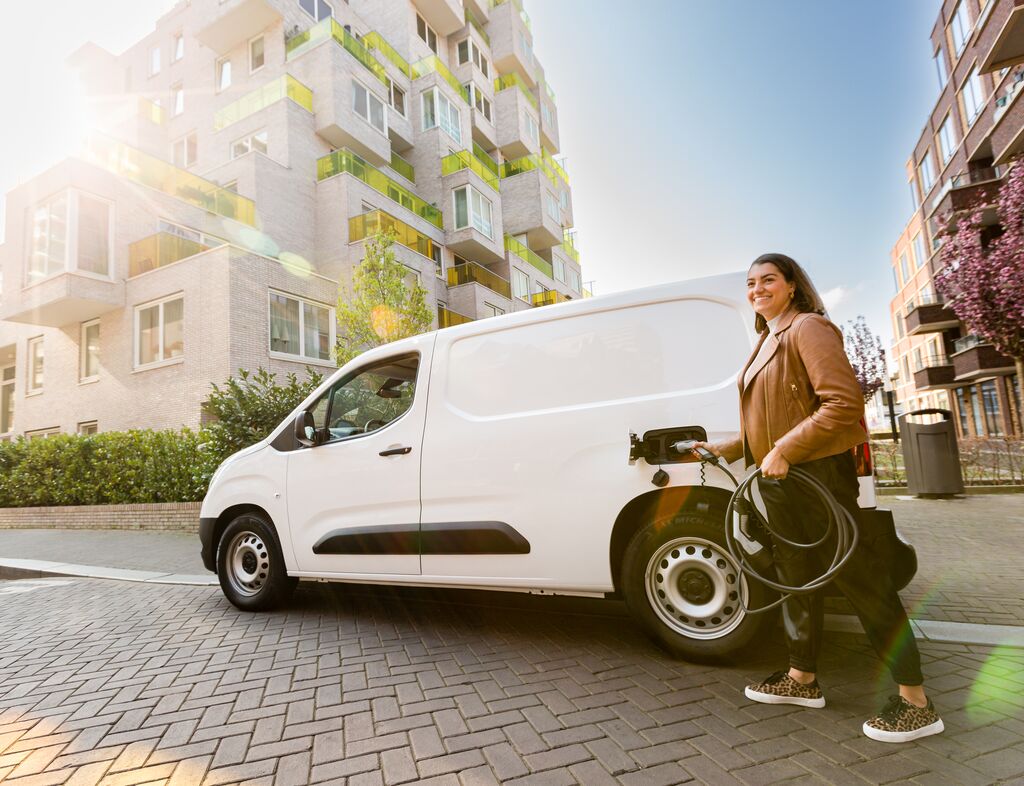Demand for electric vehicles is thriving in the UK. With more than 190,000 electric cars [1] and 15,000 plug-in vans [2] registered last year, there are more than twice as many on our roads than at the end of 2020 [3]. It’s a positive outlook, but there are growing concerns that the charging network isn’t keeping up.
The Department for Transport (DfT) wants to close that gap. Backed by £1.6bn in funding, the Electric Vehicle Infrastructure Strategy sets out plans for 300,000 public chargepoints across England, and an experience that’s “easier and cheaper than refuelling a petrol or diesel car” [4]. Here’s what you need to know.
Ultra-fast chargepoints
Motorway service areas (MSAs) in England are already required to have at least six ultra-fast chargepoints by the end of 2023 – some sites will have 12. These will offer outputs between 150kW and 350kW, restoring up to 100 miles of range in five minutes for compatible vehicles. All units at 50kW or higher must also operate at 99% reliability by that date.
Rapid charging fund
Further growth will be underpinned by the £950m Rapid Charging Fund, announced last September [5] as part of plans to roll out 6,000 ultra-fast chargepoints on the strategic road network by 2035 [6]. A consultation this winter will design the scheme to encourage fair competition between network operators, ahead of the launch next year.
Electrical capacity
The DfT also noted that electrical capacity is a challenge for some sites. More than 40 MSAs and two trunk road locations (including sites in Wales) will get an upgraded grid connection under the Ofgem Green Recovery Scheme [7]. National Highways is also investing £11m to install “around 20” energy storage systems at MSAs by the end of next year [8], providing extra capacity for ultra-fast charging.
Streamlining on-street charging
A new £450m Local Electric Vehicle Infrastructure (LEVI) Fund will support local authorities installing charging hubs and on-street chargepoints where demand is slower, by providing staff, expertise and tools. There are also proposals to streamline planning permission and highways consent, which will make it easier to install new chargepoints.
Subject to consultation, local authorities will be obliged to develop their own infrastructure strategies, considering the needs of fleets operators, e-bikes and motorbikes as well as private cars. Notably, the DfT says this should use existing bays and street furniture where possible and must not obstruct cyclists or create trip hazards for pedestrians.
Easier access and payment
Incoming legislation will set out tough standards for charging networks, focused on ease of use. Chargepoints will be required to share real-time usage information and pricing based on a standardised pence-per-kilowatt-hour metric, similar to plugging in at home, enabling drivers to locate and compare local charging options.
Standardisation will enable fleets to roam between networks and, consumers to access all rapid chargers using a contactless card without requiring multiple apps and accounts. The DfT is also working with Motability and the British Standards Institute (BSI), with plans to set out best practice for accessible chargepoints and help drivers find them.
What’s happening in the devolved nations?
Wales
Wales set out its charging strategy last year, including rapid chargers for urban taxi fleets and no more than 20 miles apart on the strategic road network. Targets include one on-street chargepoint per three vehicles, and requirements for charging provision at new-build houses too [10].
Scotland
Scotland proposed a £60m charging fund for local authorities in January, which will double the country’s existing network of 2,100 public chargers. The Government hopes to attract half of that investment from the private sector [11].
Northern Ireland
The Northern Ireland Executive will release its EV Charging Infrastructure Plan later this year, with a near-term focus on rapid chargers on the strategic road network. Priorities also include on-street and destination charging in areas where driveways are less common [12]
Find out more
To find out more, please speak to your LeasePlan Account Manager or get in touch with a member of our new business team here.
REFERENCES:
[1] Department for Transport. (2022) VEH0133: Licensed ultra low emission vehicles by body type and propulsion or fuel type: United Kingdom. [online] Available at: https://assets.publishing.service.gov.uk/government/uploads/system/uploads/attachment_data/file/1046002/veh0133.ods [Accessed 28 Mar. 2022].
[2] ACEA. (2022). New light commercial vehicle registrations by fuel type, European Union. [online] Available at: https://www.acea.auto/files/ACEA_vans_by_fuel_type_full-year_2021.pdf [Accessed 28 Mar. 2022].
[3] SMMT Media Centre. (2022). December & Full Year 2021 New Car Registrations. [online] Available at: https://media.smmt.co.uk/december-2021-new-car-registrations/ [Accessed 28 Mar. 2022].
[4] Department for Transport (2022). UK electric vehicle infrastructure strategy. [online] Available at: https://www.gov.uk/government/publications/uk-electric-vehicle-infrastructure-strategy [Accessed 28 Mar. 2022].
[5] Office for Zero Emission Vehicles. (2021). Rapid charging fund. [online] Available at: https://www.gov.uk/guidance/rapid-charging-fund [Accessed 28 Mar. 2022].
[6] Department for Transport. (2020). Government vision for the rapid chargepoint network in England. [online] Available at: https://www.gov.uk/government/publications/government-vision-for-the-rapid-chargepoint-network-in-england/government-vision-for-the-rapid-chargepoint-network-in-england [Accessed 28 Mar. 2022].
[7] Ofgem (2021) RIIO-ED1 Green Recovery Scheme. [online] Available at: https://www.ofgem.gov.uk/sites/default/files/docs/2021/05/dno_green_recovery_scheme_decision.pdf [Accessed 28 Mar. 2022].
[8] National Highways. (2021). Energy Storage Systems to support EV drivers rapidly charging on England’s motorways. [online] Available at: https://www.gov.uk/government/news/energy-storage-systems-to-support-ev-drivers-rapidly-charging-on-englands-motorways [Accessed 28 Mar. 2022].
[9] Office for Zero Emission Vehicles. (2021). On-street Residential Chargepoint Scheme guidance for local authorities. [online] Available at: https://www.gov.uk/government/publications/grants-for-local-authorities-to-provide-residential-on-street-chargepoints/grants-to-provide-residential-on-street-chargepoints-for-plug-in-electric-vehicles-guidance-for-local-authorities [Accessed 28 Mar. 2022].
[10] Welsh Government (2021) Electric Vehicle Charging Strategy for Wales. [online] Available at: https://gov.wales/sites/default/files/publications/2021-03/electric-vehicle-charging-strategy-wales.pdf [Accessed 28 Mar. 2022].
[11] Transport Scotland. (2021). A new vision for electric vehicle charging infrastructure in Scotland. [online] Available at: https://www.transport.gov.scot/news/a-new-vision-for-electric-vehicle-charging-infrastructure-in-scotland/ [Accessed 28 Mar. 2022].
[12] Northern Ireland Executive (2021). The path to net zero energy. [online] Available at: https://www.economy-ni.gov.uk/sites/default/files/publications/economy/Energy-Strategy-for-Northern-Ireland-path-to-net-zero.pdf [Accessed 28 Mar. 2022].




